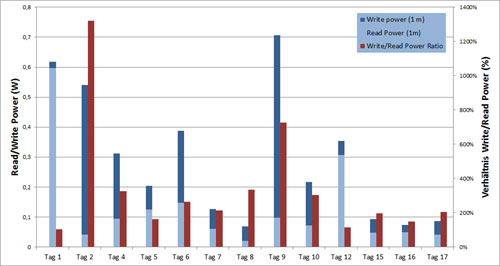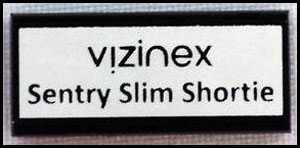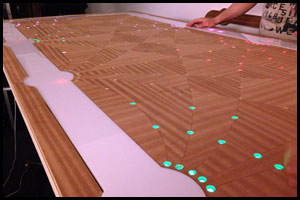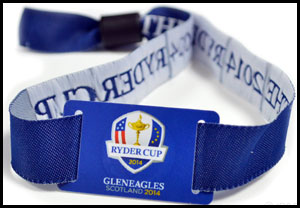Sep 11, 2014The following are news announcements made during the past week by the following organizations:
the European EPC Competence Center;
Vizinex;
ROC IT Solutions; the
MIT Mobile Experience Lab, Marriott Hotels; and the
Ryder Cup.
EECC's New Guide Compares Read-Write Performance of 250 UHF Tags
The European EPC Competence Center (EECC) has announced its new annual UHF Tag Performance Guide, titled "UHF Tag Benchmark Study," which covers 250 different ultrahigh-frequency (UHF) RFID tags. The latest edition of the report—the eighth year of its release—measured and compared the read and write performances for each of the tags covered, and it found a variation in tag-write performance of approximately a factor of 10 between the best and worst UHF tags. The EECC was founded by GS1 Germany, Deutsche Post DHL and Metro Group in 2004, with the specific objective of bringing technical acumen and transparency to the RFID industry.

According to the EECC, a number of the tags it tested provided longer read distances or very stable read performance across a wide variety of application scenarios, and there are an increasing number of specialized UHF tags, ranging from high-temperature tags to those capable of withstanding high mechanical forces. The guide also covers new form factors that can be used for standard applications. The latest generation of mount-on-metal tags, for example, is flexible enough to pass through regular UHF tag printers, which was not possible for many of the previous models, according to the EECC, which tested a total of 108 different metal-mount tags, including those made Xerafy, HID Global and Omni-ID.
The new "UHF Tag Benchmark Study" allows professional users to efficiently select the best-suited UHF tags for every imaginable application, according to Conrad von Bonin, the EECC's CEO. This is particularly important today, he says, since the diversity of UHF products is larger than ever, selection criteria is highly complex and key features of UHF tags continue to evolve along multiple, parallel dimensions.
As in previous years, a portion of the testing and analysis work performed to create the new study at EECC was funded by the SMART NRW project, which is part of the European Regional Development Fund (ERDF). Available now, the study costs €495 annually with a five-year subscription, or €995 as a one-time purchase. All products are shipped in hardcopy.
Vizinex RFID Releases Compact Sentry Slim Shortie Tag
Vizinex RFID has launched a new ultrahigh-frequency (UHF) RFID tag, known as the Sentry Slim Shortie, designed as a mount-on-metal tag with a small footprint. The new tag, which weighs 2 grams (0.07 ounce) and measures 26 millimeters by 10.9 millimeters by 2.8 millimeters (1.02 inches by 0.4 inch by 0.1 inch) is suitable for tracking weapons, IT equipment and laboratory assets at locations where space for tagging is limited, according to Vizinex RFID.
The new tag offers a read range of 6 to 8 feet and provides 96 bits of Electronic Product Code (EPC) memory, as well as 512 bits of user memory. The operating temperature ranges from -50 degrees to +85 degrees Celsius (-58 degrees to +185 degrees Fahrenheit). The tag can also be upgraded for high-temperature and -impact environments, and can thus be applied to autoclaved medical assets. What's more, it is suitable for use in rugged environments, such as oil fields or industrial settings.
ROC IT Solutions Announces New Module for Printing, Applying and Verifying Serialized Labels
ROC IT Solutions has announced its Print, Apply and Verify module, designed for serialized label printing and management. Part of the ROC IT EdgeTRAC software suite, the module is a lightweight, mobile solution that can be deployed quickly using a laptop computer, handheld scanners and mobile printers. ROC IT's EdgeTRAC software is designed to help companies capture and process data for serialized assets at the edge of the supply chain, where materials handling takes place. The software supports enterprise resource planning (ERP), electronic pedigree, track-and-trace, automatic identification or other applications, and can interoperate with any device for bar-code and RFID data capture, using GS1 standards.
The Print, Apply and Verify module enables manufacturers and repackagers to meet immediate serialization requirements worldwide, and supports compliance with the U.S. Food and Drug Administration's Drug Quality and Security Act (DQSA). The new module works within a manual packing operation to aid, for example, in serializing subsets of product lines for export to meet serialization requirements. According to ROC IT, it has been deployed at several client locations since June 2104.
Using the Print, Apply and Verify module on a smart handheld device, workers can scan or enter a product ID for items to be labeled. They can select a specific Global Trade Item Number (GTIN), lot and expiry date, and then print serialized RFID tags or 2D matrix bar-code labels containing these standard GS1 identifiers. The module supports any kind of tag format, the company reports, including active and passive tags using handheld printers and ZPL templates. Most of ROC IT's experience has been with Zebra Technologies printers for the encoding of passive tags, according to Larry Hall, ROC IT Solutions' VP of sales and operations. Specific Zebra models for UHF include the R110Xi4, RZ400 and portable RPT4 models; these printers comply with the EPC Gen 2 and ISO 18000-6C standards. ROC IT has also worked with Zebra's high-frequency (HF) RFID printer, the R2844-Z, as well as with readers supplied by Motorola and Impinj. "Our application is device-agnostic," Hill states. "We deliver an application architecture that can utilize one or many types of devices to gather data and provide intelligence at the edge of the supply chain."
After workers apply the labels and verify them with a scan from the handheld device, the ROC IT EdgeTRAC software updates all back-end systems with the commissioned serial number hierarchy data. The module is based on GS1's standards and can be integrated with any EPC Information Systems (EPCIS)-based serial number management system. Users can also generate standard reports for tag status (printed, verified, not verified or decommissioned) and export to PDF or CSV format.
MIT Mobile Experience Lab, Marriott Hotels Test NFC-enabled Platform Designed to Encourage Guest Interaction
The MIT Mobile Experience Laboratory is collaborating with Marriott Hotels on a research project that leverages Near Field Communication (NFC) and other technologies to encourage real-world interaction among individuals. The group is developing a social-network platform called Six Degrees. A prototype—currently being tested in the lobby of the Marriott in Cambridge, Mass.—is designed to let guests learn about each other, and to interact and socialize.
The platform includes the use of mobile apps, a wall display and an NFC-enabled interactive table embedded with NFC nodes that can communicate with guests' mobile devices or pre-programmed ID cards. For the prototype, the lab has used Adafruit's PN532 NFC/RFID Controller Shield, which employs a PN532 chip-set capable of reading and writing to tags and cards, communicating with phones and performing like an NFC tag, according to Amar Boghani, a creative technologist with the MIT Mobile Experience Lab. The prototype, Boghani reports, also utilizes ID cards containing NXP Semiconductors' NTAG203 chips.
The Six Degrees Mobile App pulls in data from a guest's LinkedIn account when that individual first logs in, and creates a profile based around his or her professional background and personal interests. According to the lab, the prototype platform then uses this information to match guests with one another, based on what they have in common. When someone places his or her phone or ID card on the table, the table can read that person's interests, or the activities he or she has checked into. When two people at the table have something in common, LED lights will glow in matching colors. This interaction is designed to give people a reason to look each other up, the lab explains.
The Six Degrees public display, located in the lobby, also shows information regarding upcoming events and active Six Degrees users at the hotel. What's more, it visualizes aggregate data about the Six Degrees community.
Ryder Cup Tees Up RFID Technology for Spectators
The 2014 Ryder Cup, the biennial professional match-play golf competition between teams from Europe and the United States—which will take place on Sept. 22-29 at Scotland's Gleneagles Hotel—will feature RFID-enabled wristbands that enable spectators to interact via social media and pay for goods via contactless payment. The RFID technology is being provided by ID&C, a U.K.-based provider of security, promotional and contactless payment wristbands, while Intellitix is supplying software and readers.
Spectators will receive the RFID wristbands with their tickets, and can activate and register their tags via a tablet or smartphone, or by approaching one of the volunteers stationed within the venue's tented village information centers. Once activated, the RFID technology will enable fans to engage with many of the official Ryder Cup partner activities based in the Ryder Cup Spectator Village, including the BMW Car Display and The Ryder Cup Experience with Standard Life Investments, in which spectators can compete in a simulated team competition with live scoreboards located around the venue, according to the Ryder Cup. On the course, an initiative called "Walk the Course" will encourage spectators to visit all areas of the venue, with prizes awarded to those who check in at points around the course. The wristbands will also allow fans to show support for their team, including offering a virtual "high five" for the European Team or Team USA upon their arrival, by touching their wristband to points around the golf course. They will also be able to connect with friends and family around the world through automatic social-media updates on Facebook and Twitter.
ID&C has declined to identify details regarding the RFID chips and readers being used for the Ryder Cup. In the past, however, ID&C and Intellitix provided the technology for such events as last summer's Bonnaroo Music and Arts Festival, so that attendees could gain admission to the event, share "likes" and pictures of themselves on Facebook, upload music playlists to commercial music-streaming service provider Spotify, and post tweets on Twitter. Each ID&C wristband came with a built-in 13.56 MHz tag compliant with the ISO 15693 standard (see RFID Performs a Bigger Role at Bonnaroo Festival).




